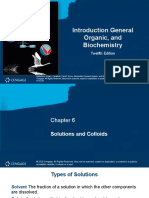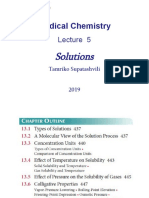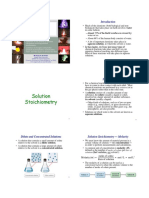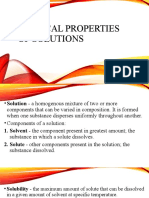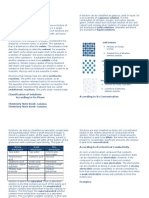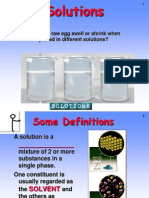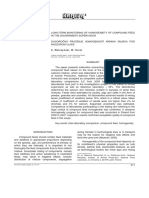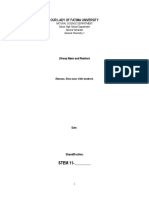0% found this document useful (0 votes)
116 views54 pagesModule 4 Solutions
This document discusses solutions and solubility. It defines key terms like solution, solute, solvent, saturated solution, and solubility. It explains that solubility is affected by temperature, particle size, and shaking/agitation. It discusses concentration in terms of dilute, concentrated, and supersaturated solutions. Finally, it classifies electrolytes and non-electrolytes and discusses how ionic and molecular compounds dissolve in water.
Uploaded by
Gelacio Masgong IIICopyright
© © All Rights Reserved
We take content rights seriously. If you suspect this is your content, claim it here.
Available Formats
Download as PDF, TXT or read online on Scribd
0% found this document useful (0 votes)
116 views54 pagesModule 4 Solutions
This document discusses solutions and solubility. It defines key terms like solution, solute, solvent, saturated solution, and solubility. It explains that solubility is affected by temperature, particle size, and shaking/agitation. It discusses concentration in terms of dilute, concentrated, and supersaturated solutions. Finally, it classifies electrolytes and non-electrolytes and discusses how ionic and molecular compounds dissolve in water.
Uploaded by
Gelacio Masgong IIICopyright
© © All Rights Reserved
We take content rights seriously. If you suspect this is your content, claim it here.
Available Formats
Download as PDF, TXT or read online on Scribd
/ 54

